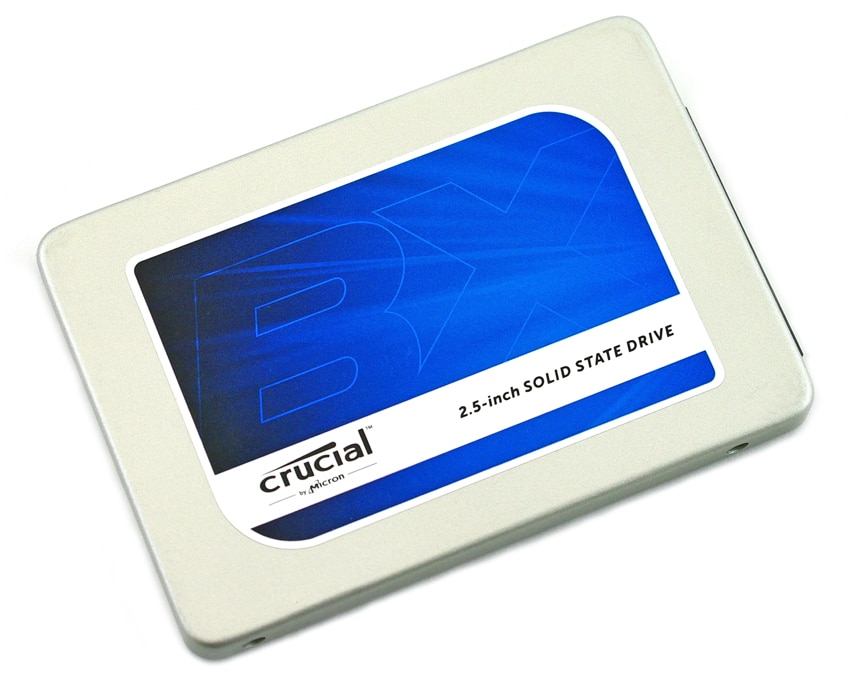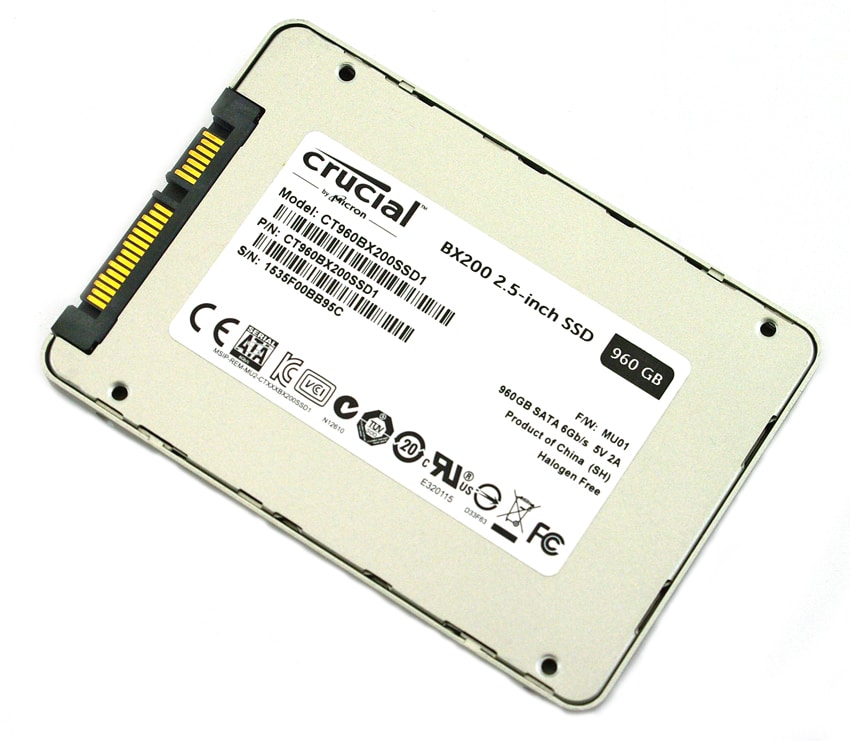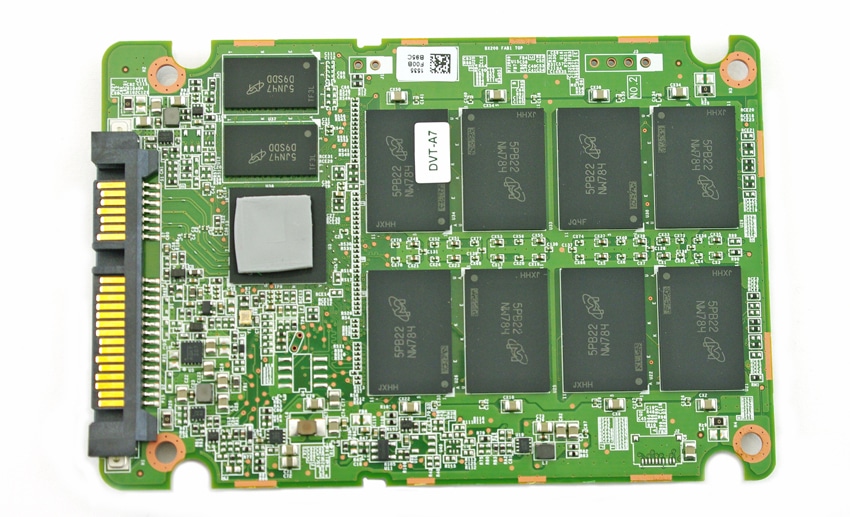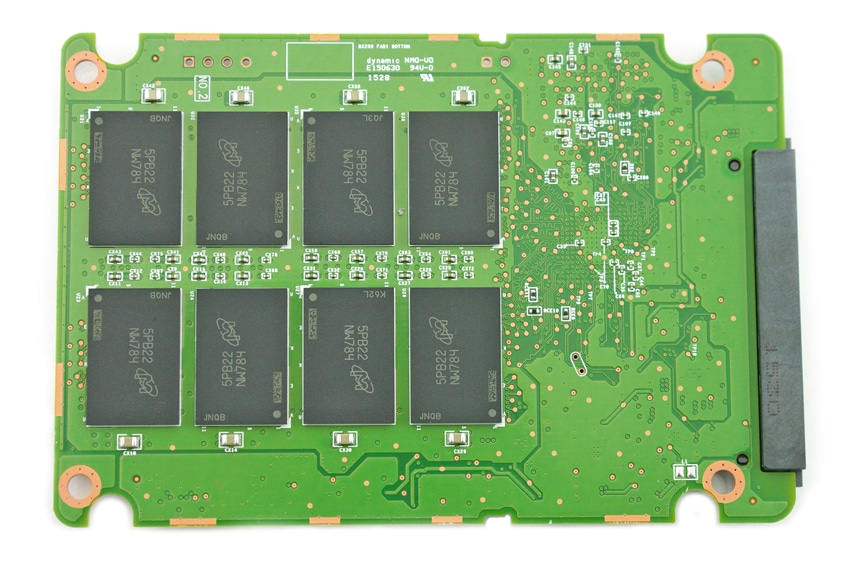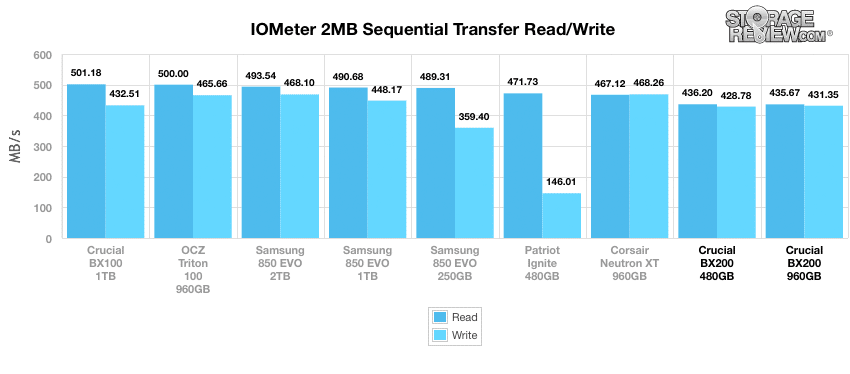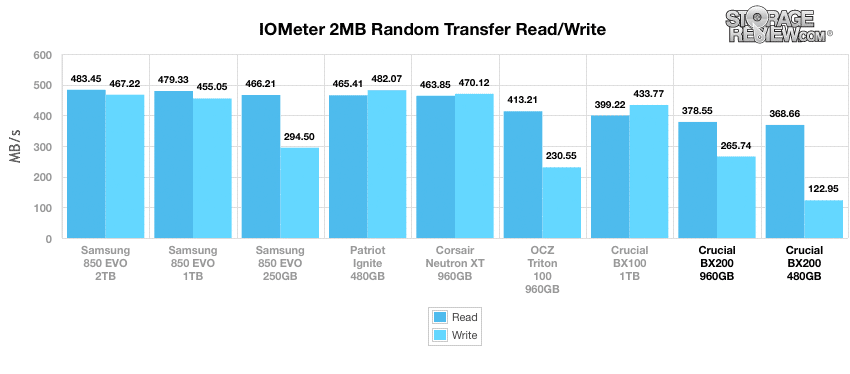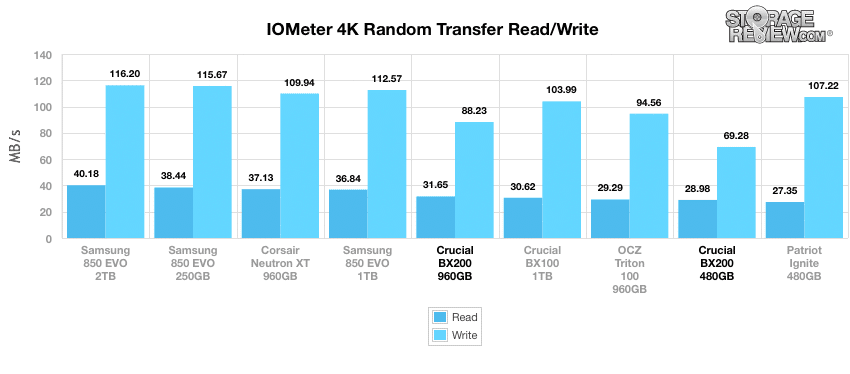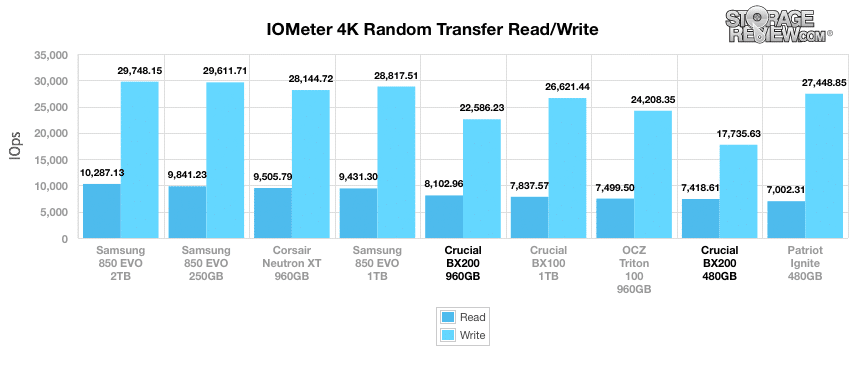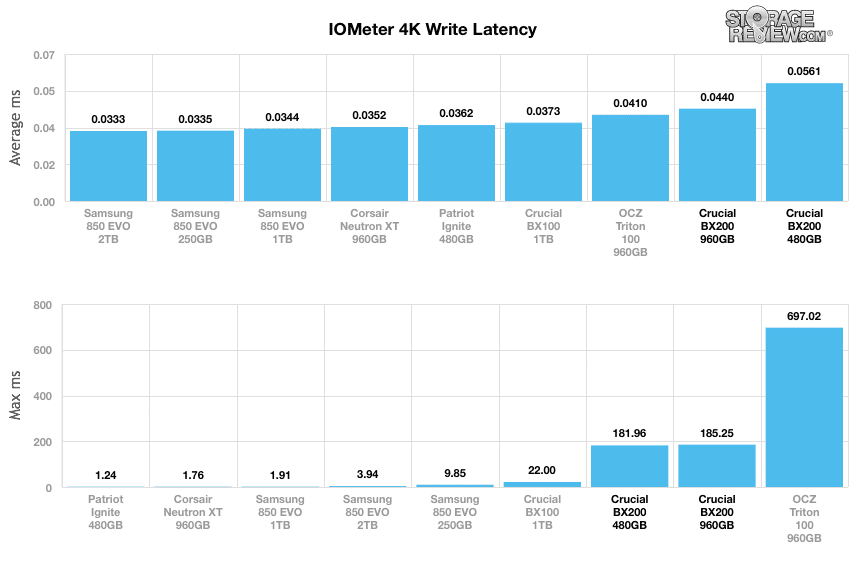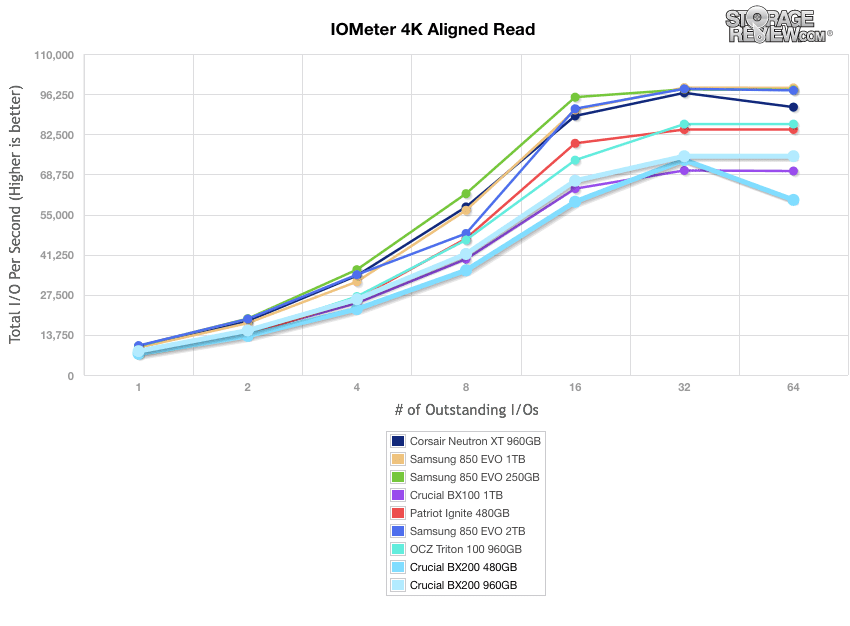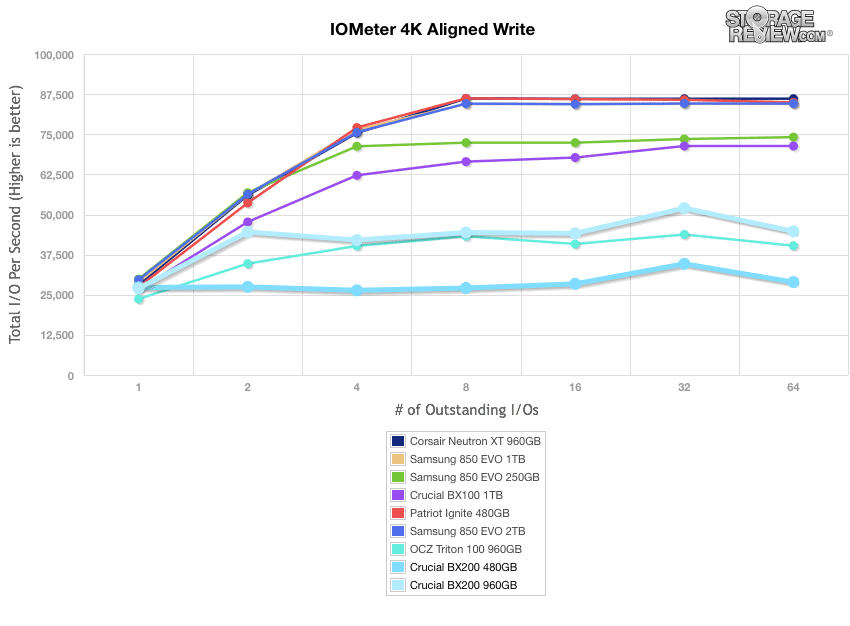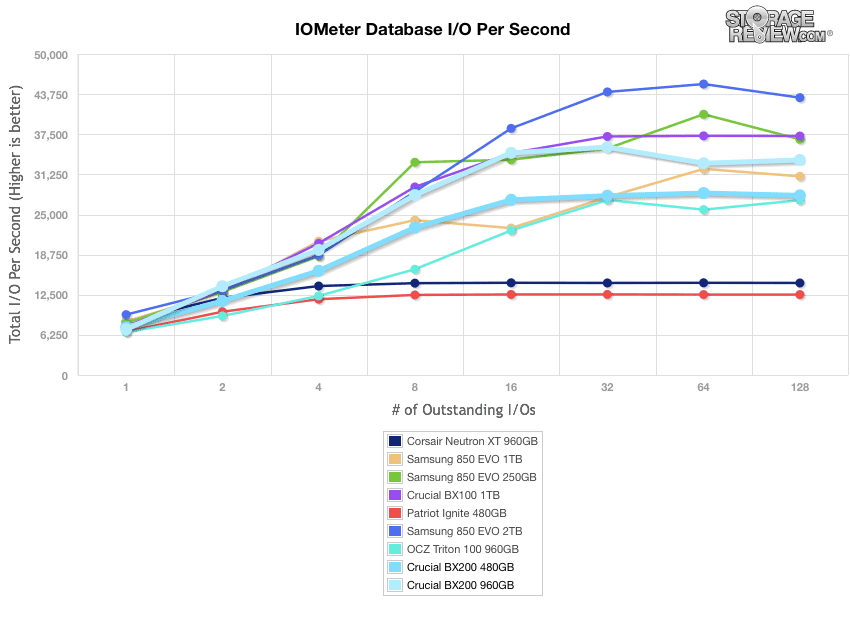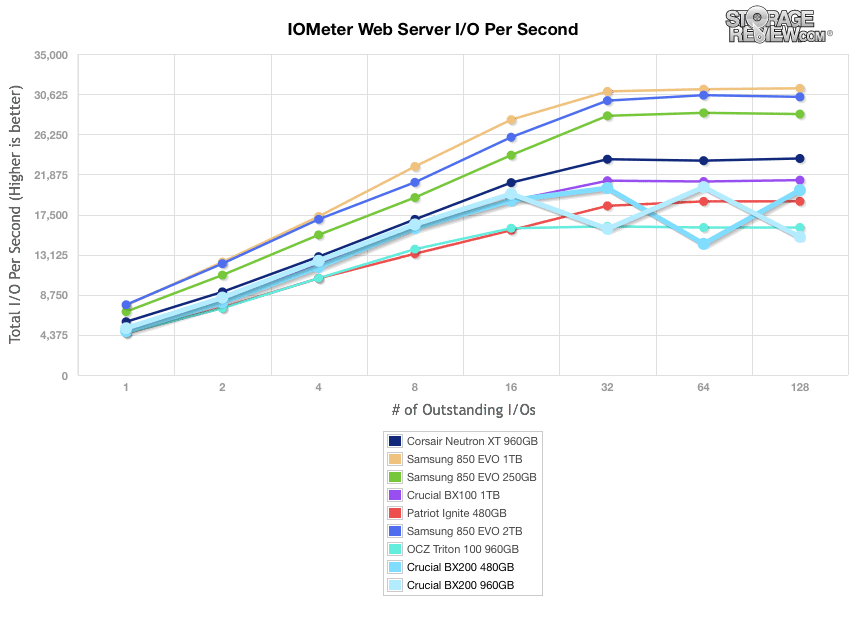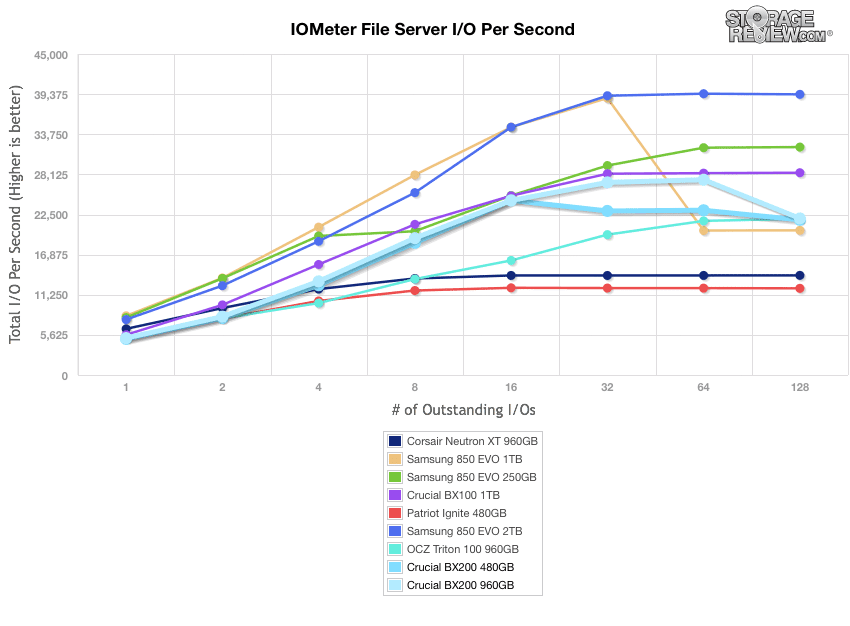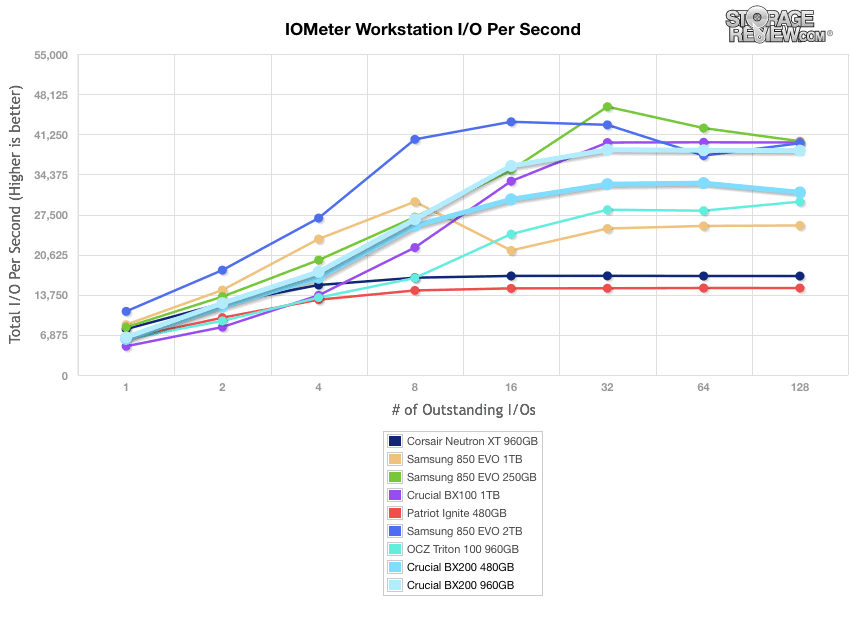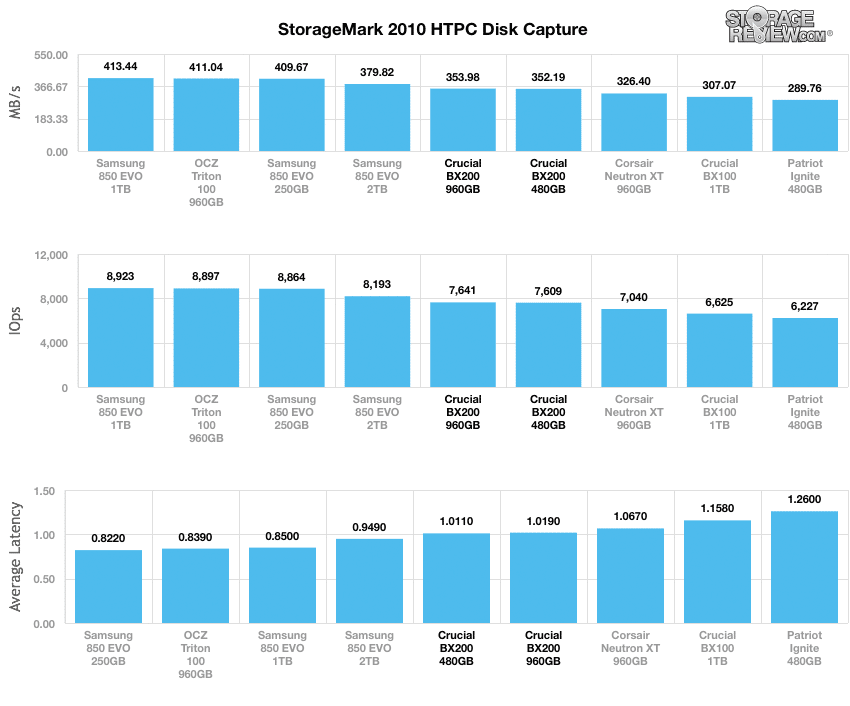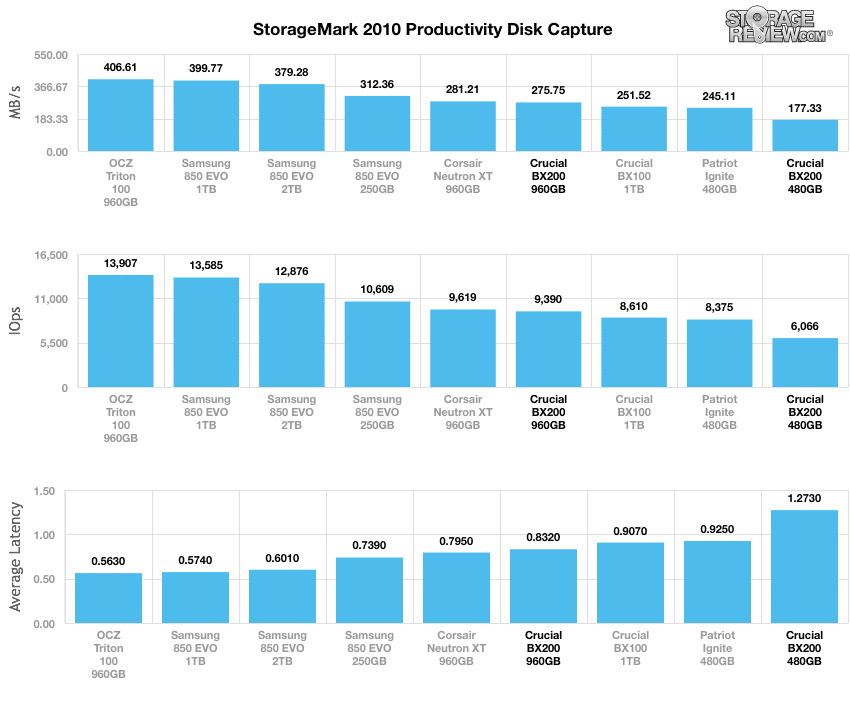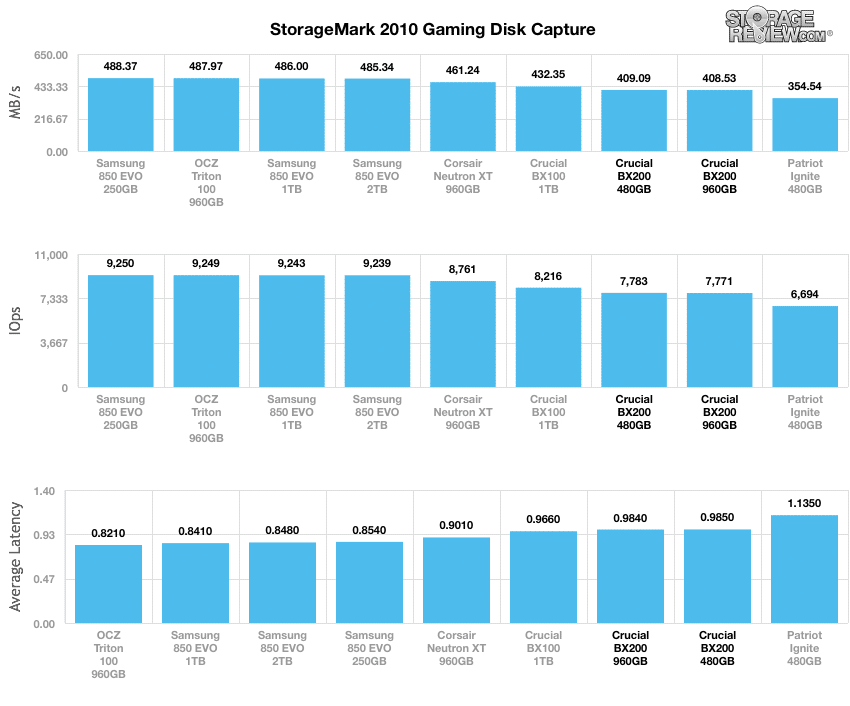
Crucial has released their newest addition to their economy line of drives with the BX200 SSD, Micron’s first TLC-based solid-state drive. Like their BX100 before it, the BX200 is firmly targeted toward budget-minded consumers and those looking to upgrade their hard disk-based system to solid state technology. There are significant benefits and performance gains when leveraging SSDs; even with the more budget-friendly drives. As such, the BX200 allows users to experience speedy load times with their applications, system boot ups that occur almost instantly, and improve the overall performance to every day applications. Coupling its equipped Silicon Motion SM2256 Controller, 4-channels of Micron NAND flash and custom firmware, the BX200 also offers ultra-low power consumption.
While Crucial is certainly pulling punches with the release of the BX200, it still is quoted to offer speeds well over 10 times more than platter drives with read and write speeds up to 540MB/s and 490MB/s respectively and random read and write speeds reaching 66,000 IOPS and 78,000 IOPS respectively. Though sequential transfer rates are slightly better than the BX100, which was quoted at 535MB/s read and 450MB/s write, the newer BX drive is specced to deliver slower random read throughput; however, this was expected with the switch to TLC.
The BX200 uses the company’s Extreme Energy Efficiency and Device sleep (DEVSLP), technology, which enhances its already low power consumption design and better than its predecessor (65mW vs 115mW in idle average). The BX200 also ships with Acronis True Image HD data migration software, an easy way to moves all your files, operating systems, settings and programs your current hard drive in use to the new SSD. Like all Micron SSDs, the BX200 includes advanced technology for defect and error management, using several combinations of hardware-based error correction algorithms and firmware-based static and dynamic wear-leveling algorithms.
Though the BX200 lacks the extensive feature-set of Crucial’s M-class line of SSDs, the company’s new SSD has one sole focus: drive the price down as much as possible. Backed by a 3-year limited warranty, the Crucial BX200 comes in capacities of 240GB, 480GB and 960GB priced at just $84.99, $149.99 and $299.99, respectively. We will be looking at the 480GB and 960GB units for this review.
Crucial BX200 Specifications
- NAND: Micron 16nm TLC NAND Flash
- Capacities: 240GB, 480GB, 960GB
- For Factor: 2.5 inch x 7mm
- RoHS-compliant package
- Interface: SATA 6 Gb/s
- ATA modes supported:
- PIO mode 3, 4
- Multiword DMA mode 0, 1, 2
- Ultra DMA mode 0, 1, 2, 3, 4, 5, 6
- Industry-standard, 512-byte sector size support
- Hot-plug/hot-remove capable
- Device sleep (DEVSLP), extreme low-power mode
- Native command queuing support with 32-command slot support
- ATA-8 ACS2 command set compliant
- ATA security feature command set and password login support
- Secure erase (data page) command set: fast and secure erase
- Sanitize device feature set support
- Self-monitoring, analysis, and reporting technology
- (SMART) command set
- Power loss protection for data-at-rest
- Performance:
- PCMark Vantage (HDD test suite score): Up to 86,000
- Sequential 128KB READ: Up to 540 MB/s
- Sequential 128KB WRITE: Up to 490 MB/s
- Random 4KB READ: Up to 66,000 IOPS
- Random 4KB WRITE: Up to 78,000 IOPS
- Reliability:
- MTTF: 1.5 million device hours2
- Static and dynamic wear leveling
- Uncorrectable bit error rate (UBER): <1 sector per 1015 bits read
- Low power consumption: 150mW TYP3
- Endurance – total bytes written (TBW): Up to 72TB
- Operating temperature: Commercial (0°C to 70°C)
Design and Build
The Crucial BX200 is identical to the BX100 as far as its exterior design is concerned. As such, it has the same stylized label sticker that is placed on the front of the SSD, which displays the Crucial logo, product brand, and the form-factor information. The enclosure itself is comprised of a smooth, robust metal build.
Located on the backside of the drive is information about the specific model, including the model number, capacity, and form factor.
The side profiles have the standard two screw holes, enabling easy system mounting of the BX200. The BX200 model also uses the slim 7mm (2.5″) form factor, which allows it to fit inside Ultrabooks and other slim notebooks. To supplement desktop PCs, it comes with a 7mm-to-9.5mm adapter bracket.
The Crucial BX200 uses equipped Silicon Motion SM2256 Controller with 4-channels of Micron NAND flash.
Consumer Synthetic Benchmarks
All consumer SSD benchmarks are conducted with the StorageReview HP Z620 Workstation. We compared the Crucial BX200 with the following comparables:
- Samsung 850 EVO 2TB (SATA, 6Gb/s, Samsung MHX controller)
- Samsung 850 EVO 1TB, 250GB (SATA, 6Gb/s, Samsung MEX controller (1TB), Samsung MGX controller (250GB))
- Corsair Neutron XT 1TB (SATA, 6Gb/s, Phison PS3110-S10 controller)
- Crucial BX100 1TB (SATA, 6Gb/s, Silicon Motion SM2246EN controller)
- Patriot Ignite 480GB (SATA, 6Gb/s, Phison S10 Series controller)
- OCZ Trion 100 960GB (SATA, 6GB/s, Toshiba controller TC58)
All IOMeter figures are represented as binary figures for MB/s speeds.
Our first test measures 2MB sequential performance. Here, the BX200 480GB posted 436.20MB/s read and 428.78MB/s write, while the 960GB model recorded 435.67MB/s read and 431.35MB/s write placing both at the bottom of the leaderboard. Both BX200 models performed noticeably less than their BX100 brethren in reads, which measured 501.18MB/s.
In 2MB random transfer performance, BX200 480GB measured 368.66MB/s read and 122.95MB/s write while the 960GB model recorded 378.55MB/s read and 265.74MB/s write. These results place both drives at the bottom of the pack again.
Switching to smaller 4K random transfers, the BX200 480GB measured 28.98MB/s in read activity and 69.28MB/s for writes, placing it last in both column. The 960GB performed slightly better, though still noticeable less than the BX100.
Things picked up slightly during in the IOPS category, where the 960GB model posted 8,102.96 IOPS read and 22,586.23 IOPS write, ranking near the middle of leaderboard this time around. The BX200 480GB recorded, as expected, boasted noticeably slower results with 7418.61 IOPS read and 17735.63 IOPS write.
Our 4K write latency benchmark looks at both the average and maximum readings. Here, the BX200 480GB showed a leading average latency of 0.056ms with 181.96ms in maximum latency. Again, the 960GB model had slightly better results with 0. 0.044ms (average) and 185.25ms (maximum).
Our next test shifts to a 4k random workload with 100% read activity that scales from 1QD to 64QD. In this scenario, the BX200 480GB scaled from 27,296.49 IOPS up to just 28,934.96 IOPS while the 960GB model had a range from 26,998.2 IOPS to a significantly better 44,753.80 IOPS; however, it still placed it firmly at the bottom of the pack, with the 960GB model placing just above the OCZ Trion 100.
In write activity of the same benchmark, the BX200 480GB ranged from 7,262.69 IOPS to 60,001.11 IOPS while the 960GB model measured 8180.51 IOPS at QD1 and 74978.97 IOPS at in the terminal queue depths.
Our last series of synthetic benchmarks compare the SSDs in a series of server mixed-workloads with a queue depth of ranging from 1 to 128. Each of our server profile tests has a strong preference towards read activity, ranging from 67% read with our database profile to 100% read in our web server profile. In all of our mixed workloads, both BX200 drives improved significantly compared to our previous benchmarks.
The first is our database profile, which consists of a 67% read and 33% write workload mix primarily centered on 8K transfer sizes. Here, the BX200 960GB performed very well for a budget drive, with an IOPS of 33,488.48 in the terminal for a mid-range ranking. The 480GB model had a slightly slower IOPS at Q128 with 27,980.61.
Our web server profile is read-only with a spread of transfer sizes from 512-byte to 512KB. Here, the BX200 960GB drive provided a range of 5,098.35 IOPS to 15,062.40 IOPS while the 480GB model offered 4761.02 IOPS to 20,164.83 IOPS.
The next profile looks at a file server, with 80% read and 20% write workload spread out over multiple transfer sizes ranging from 512-byte to 64KB. The 960GB delivered a range of 5,173.046 IOPS and 21,950.18 IOPS, while the 480GB model ranged from 5,069.99 IOPS to 21,752.71 IOPS, placing them both in the upper middle part of the leaderboard.
The last profile looks at workstation activity, with a 20% write and 80% read mixture using 8K transfers. The BX200 960GB drive started at just 6,461.29 IOPS but ended up at near top of the leaderboard by Q128 with 38,444.42757 IOPS. The 480GB model boasted a range of 6,185.36 IOPS to 31,292.64 IOPS.
Consumer Real-World Benchmarks
For the average consumer, trying to translate random 4K write speeds into an everyday situation is pretty difficult. It helps when comparing drives in every setting possible, but it doesn’t exactly work out into faster everyday usage or better game loading times. For this reason we turned to our StorageMark 2010 traces, which include HTPC, Productivity, and Gaming traces to help readers find out how a drive might rank under these conditions.
The first real-life test is our HTPC scenario. In this test we include: playing one 720P HD movie in Media Player Classic, one 480P SD movie playing in VLC, three movies downloading simultaneously through iTunes, and one 1080i HDTV stream being recorded through Windows Media Center over a 15 minute period. Higher IOPS and MB/s rates with lower latency times are preferred. In this trace we recorded 2,986MB being written to the drive and 1,924MB being read.
In our HTPC profile, the BX200 480GB and 960GB posted near identical numbers, placing them in the middle of the pack with an IOPS of 7,608.54 and 7640.85 respectively. They also clocked in at 352.19MB/s and 353.98MB/s and with an average latency of 1.011ms and 1.019ms respectively.
Our second real-life test covers disk activity in a productivity scenario. For all intents and purposes this test shows drive performance under normal daily activity for most users. This test includes: a three hour period operating in an office productivity environment with 32-bit Vista running Outlook 2007 connected to an Exchange server, web browsing using Chrome and IE8, editing files within Office 2007, viewing PDFs in Adobe Reader, and an hour of local music playback with two hours of additional online music via Pandora. In this trace we recorded 4,830MB being written to the drive and 2,758MB being read.
In our Productivity trace, the BX200 960GB capacity had significantly better results than the smaller model, posting 275.75MB/s, 9389.56 IOPS, and an average latency of 0.832ms. The 460GB model posted 177.33MB/s, 6,066.8 IOPS and an average latency of 1,273, all of which placed at the bottom of the leaderboard.
Our third real-life test covers disk activity in a gaming environment. Unlike the HTPC or Productivity trace, this one relies heavily on the read performance of a drive. To give a simple breakdown of read/write percentages, the HTPC test is 64% write, 36% read, the Productivity test is 59% write and 41% read, while the gaming trace is 6% write and 94% read. The test consists of a Windows 7 Ultimate 64-bit system pre-configured with Steam, with Grand Theft Auto 4, Left 4 Dead 2, and Mass Effect 2 already downloaded and installed. The trace captures the heavy read activity of each game loading from the start, as well as textures as the game progresses. In this trace we recorded 426MB being written to the drive and 7,235MB being read.
In our read-intensive Gaming trace, the BX200 960GB produced 408.53MB/s, 7,770.78IOPS, and 0.984ms while the 480GB posted virtually the same results with 409.09MB/s, 7,783.06 IOPS, and 0.985ms, both placing at the bottom of the pack.
Conclusion
The BX200 is Crucial’s latest addition to their economical SSD line, offering mainstream consumers an inexpensive way to upgrade their PCs or laptops from a hard disk setup to a rig based on solid-state drive technology. Sporting a 2.5″ (7mm) form factor, these SSDs feature a SATA 6Gb/s interface, Micron TLC NAND, a Silicon Motion SM2256 Controller and ships with a 7mm-to-9.5mm adapter bracket for those using desktops. In addition to its ultra-low cost price tag, the BX200 features incredibly low power consumption, which is even lower than the previous BX100 model.
Like all inexpensive SSDs, the BX200’s performance is certainly a mixed bag, boasting uneven result throughout our benchmarks; this was certainly expected, however. Crucial has reiterated to us on several occasions that, like the BX100, this drive is not designed for performance-hungry users, but for ultimate affordability and solely for upgraders and budget-minded folks. In addition, it should be noted that most of the top performaning drives we compared it to (such as the Samsung 850 EVO) were significantly more expensive, so it would be wise to take that into consideration.
As for the specifics of its performance, our sequential 2MB workloads showed the 480GB model with 436.20MB/s read and 428.78MB/s write, while the 960GB unit recorded 435.67MB/s read and 431.35MB/s write; both placed at the bottom of the leaderboard. The random workload told a similar story, measuring 368.66MB/s read and 122.95MB/s write for the 480GB drive while the 960GB model recorded 378.55MB/s read and 265.74MB/s write. As expected, results were mirrored in our smaller 4k random transfers and latency benchmarks, which were also lower than the BX100. Performance picked up slightly during our server profile tests (with the exception web server activity), where both capacities of the BX200 placed in the middle part of the leaderboard throughout our workloads. Moving to our real-world workloads, the BX100 960GB model showed performance that ranked in the middle part of the pack during our Productivity and HTPC traces, though it placed well at the bottom in our Gaming profile.
Overall, the BX200 performed as expected. When taking everything into consideration, the Crucial BX200 will likely be an attractive drive for many, since its target demographic is generally mainstream consumers interested in an inexpensive system upgrade rather than performance. The BX200 goes for just $86 for the 240GB model and $150 for the 480GB model, which is a fantastic price-per-GB ratio and a serious improvement on its predecessor. No matter how you look at it, users will see a huge improvement in performance when upgrading from HDD-based system. Though power consumers and those with a larger budget will certainly avoid this product, there are many out there that will (and should) jump on Crucial’s sub-$100 solid-state drive. Coupled with its low power consumption, its mid-to-low range performance is certainly good enough for most users. This is a good start for any consumer.
Pros
- Great price; currently the most inexpensive SSD line on the market
- Decent performance during our server mixed-workloads
- Low power consumption
Cons
- Overall uneven performance
Bottom Line
What the BX200 lacks in the performance, it makes up for it in both its price and power consumption, which allows for a perfect option for mainstream consumers looking to upgrade their HDD-based rig to solid-state drive technology.

